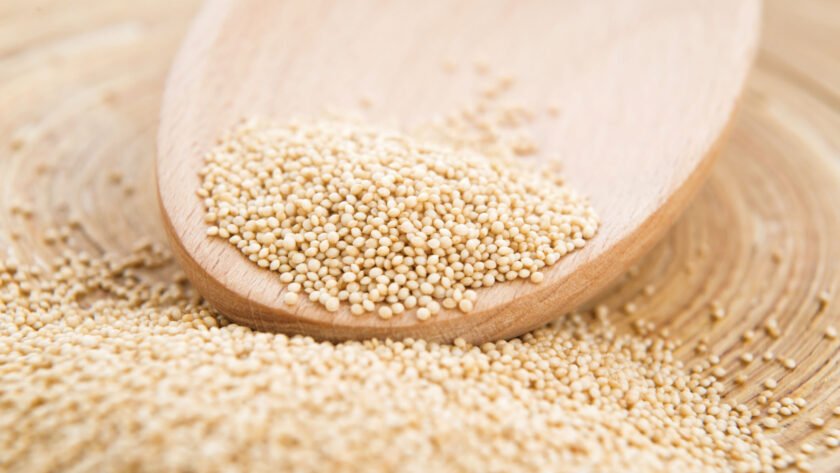Amaranth flour is a gluten-free, protein-rich flour widely used by the Aztec and Inca civilizations of the pre-Columbian Americas. It is produced by grinding seeds from the amaranth plant into a fine powder. Although technically not a grain, amaranth yields a buff-colored, grain-like flour that is variously described as nutty, earthy and grassy. Amaranth flour’s protein gets high marks for quality because of its rich content of the amino acids lysine  and methionine.
and methionine.
Plant Source
Amaranth’s name comes from the Greek for “immortal” or “everlasting.” Despite its many health benefits, amaranth makes no claim to endow its users with immortality but is so-named because its seed is virtually indestructible. Amaranth species cultivated for use as grain belong to the pigweed family, according to a profile of the plant from Kansas State University’s Cooperative Extension Service. Grain amaranth species include Amaranthus caudatus, A. cruentus and A. hypochondriacus. Bushy with thick stalks, amaranth plants reach a maximum height of 3 to 9 feet. The seeds from which amaranth flour is milled come in various colors, including gold, tan, pink and white, depending on the species of grain amaranth that is used.
Nutritional Data
Considered a pseudocereal unrelated to wheat or other true grains, amaranth not only delivers high-quality protein — roughly 17 percent by weight — but also contains plenty of other healthful nutrients. Its high levels of the amino acid lysine help your body to properly absorb calcium from the digestive tract. For those interested in increasing their calcium intake, amaranth flour also has twice as much calcium — ounce for ounce — as cow’s milk, according to “The Thrive Diet.” Amaranth flour is also rich in fatty acids and includes tocotrienol, a potent form of vitamin E. Amaranth flour has roughly five times the iron and three times the fiber of wheat flour. It’s also rich in other micronutrients, including potassium, phosphorus and, vitamins A and C.
Help for the Gluten-Sensitive
Individuals who experience allergic reactions to foods containing gluten can avoid or minimize these unpleasant symptoms by using amaranth flour in combination with other flours that are either gluten-free or extremely low in gluten content. Gluten is a protein composite found in many foods made from wheat and certain other grains. Susan O’Brien, author of “Gluten-Free, Sugar-Free Cooking,” recommends using amaranth flour by itself for thickening sauces or breading. For baked goods, she suggests using amaranth flour to make up 25 percent of the total flour content in recipes, combining it with other gluten-free flours such as quinoa and brown rice flours.
Strong Antioxidant Properties
A team of Brazilian researchers conducted laboratory and animal studies to assess the antioxidant properties of Amaranthus hypochondriacus, one of the primary species used to produce amaranth flour. In-vitro testing showed that amaranth seed extract had adequate levels of total phenols — naturally occurring plant compounds — and demonstrated increased antioxidant activity. In the animal study, the livers of laboratory rats were subjected to ethanol. Rats that were then fed an amaranth seed extract displayed less liver damage than those in control groups that received alternative feeds. In an article in a 2009 issue of “Plant Foods for Human Nutrition,” researchers said their findings confirm that amaranth seed is a good source of phenols that show a protective effect on the blood and livers of rats exposed to ethanol.
Read more abouth Amaranth properties and see why Flour Academy advises you to use amaranth flour
Source: http://healthyeating.sfgate.com/amaranth-flour-1423.html




